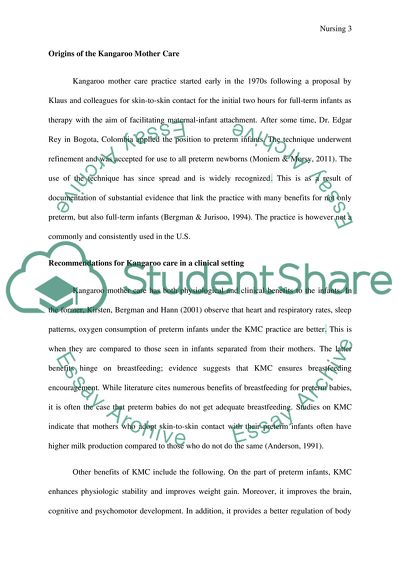Cite this document
(“A case study on Kangaroo Care : a family centered care for prematurely Essay”, n.d.)
A case study on Kangaroo Care : a family centered care for prematurely Essay. Retrieved from https://studentshare.org/nursing/1672246-a-case-study-on-kangaroo-care-a-family-centered-care-for-prematurely-born-babies
A case study on Kangaroo Care : a family centered care for prematurely Essay. Retrieved from https://studentshare.org/nursing/1672246-a-case-study-on-kangaroo-care-a-family-centered-care-for-prematurely-born-babies
(A Case Study on Kangaroo Care : A Family Centered Care for Prematurely Essay)
A Case Study on Kangaroo Care : A Family Centered Care for Prematurely Essay. https://studentshare.org/nursing/1672246-a-case-study-on-kangaroo-care-a-family-centered-care-for-prematurely-born-babies.
A Case Study on Kangaroo Care : A Family Centered Care for Prematurely Essay. https://studentshare.org/nursing/1672246-a-case-study-on-kangaroo-care-a-family-centered-care-for-prematurely-born-babies.
“A Case Study on Kangaroo Care : A Family Centered Care for Prematurely Essay”, n.d. https://studentshare.org/nursing/1672246-a-case-study-on-kangaroo-care-a-family-centered-care-for-prematurely-born-babies.


